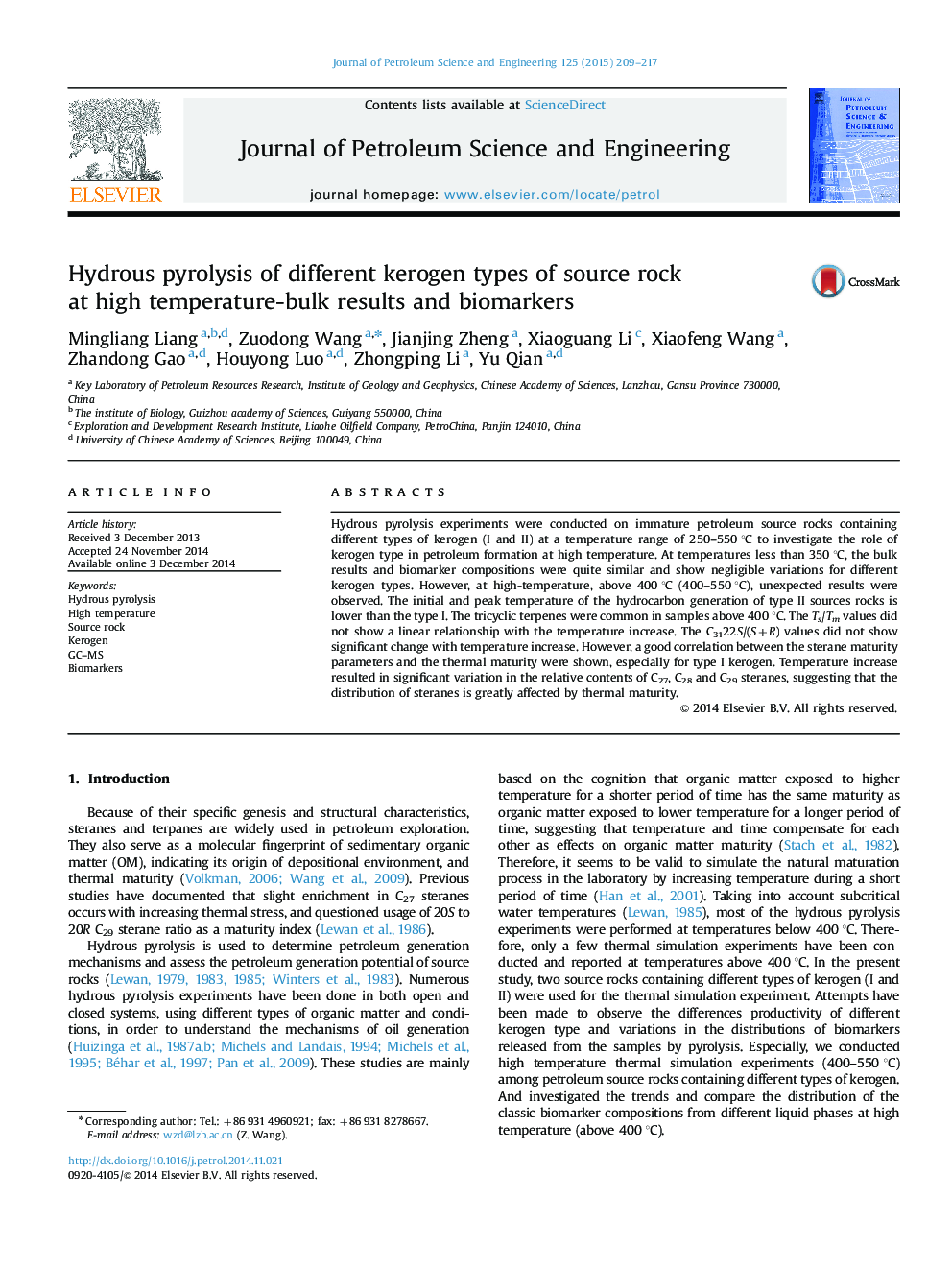| Article ID | Journal | Published Year | Pages | File Type |
|---|---|---|---|---|
| 1755016 | Journal of Petroleum Science and Engineering | 2015 | 9 Pages |
•Hydrous pyrolysis experiments were conducted on immature petroleum source rocks containing different types of kerogen (I and II).•At high-temperature, above 400 °C (400–550 °C), the unexpected results were observed.•The initial and peak temperature of the hydrocarbon generation of type II sources rocks is lower than type I.•Biomarker compositions were quite similar and show negligible variations for different kerogen types.
sHydrous pyrolysis experiments were conducted on immature petroleum source rocks containing different types of kerogen (I and II) at a temperature range of 250–550 °C to investigate the role of kerogen type in petroleum formation at high temperature. At temperatures less than 350 °C, the bulk results and biomarker compositions were quite similar and show negligible variations for different kerogen types. However, at high-temperature, above 400 °C (400–550 °C), unexpected results were observed. The initial and peak temperature of the hydrocarbon generation of type II sources rocks is lower than the type I. The tricyclic terpenes were common in samples above 400 °C. The Ts/Tm values did not show a linear relationship with the temperature increase. The C3122S/(S+R) values did not show significant change with temperature increase. However, a good correlation between the sterane maturity parameters and the thermal maturity were shown, especially for type I kerogen. Temperature increase resulted in significant variation in the relative contents of C27, C28 and C29 steranes, suggesting that the distribution of steranes is greatly affected by thermal maturity.
